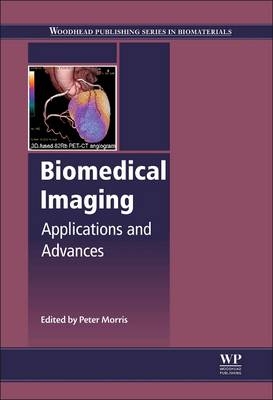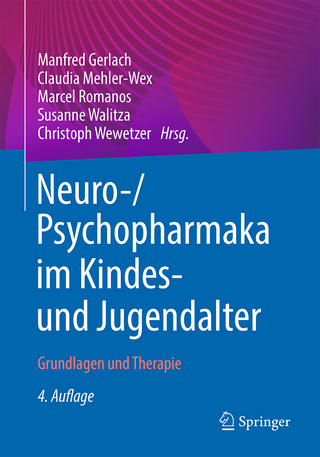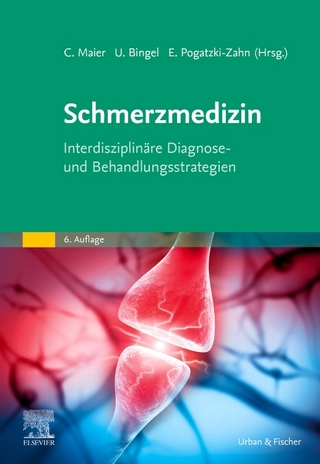
Biomedical Imaging
Woodhead Publishing Ltd (Verlag)
978-0-85709-127-7 (ISBN)
- Titel ist leider vergriffen;
keine Neuauflage - Artikel merken
Biomedical Imaging: Applications and Advances discusses the technologies and latest developments in the increasingly important field of imaging techniques for the diagnosis of disease, monitoring of medical implants, and strategies for personalized medicine.
Chapters in part one explore the full range of imaging technologies from atomic force microscopy (AFM) to positron emission tomography (PET), as well as the next-generation techniques that could provide the basis for personalized medicine. Part two highlights application-specific biomedical imaging methods, including ophthalmic imaging of ocular circulation, imaging methods for detection of joint degeneration, neural brain activation imaging, and the use of brain imaging to assess post-therapy responses. Further chapters review intravascular, cardiovascular, and whole-body magnetic resonance imaging (MRI).
Biomedical Imaging is a technical resource for those concerned with imaging and diagnosis, including materials scientists and engineers as well as clinicians and academics.
Peter Morris is Head of Sir Peter Mansfield Magnetic Resonance Centre, Faculty of Science, University of Nottingham, UK.
Contributor contact details
Woodhead Publishing Series in Biomaterials
Foreword
Preface
Part I: Imaging technologies
1. Biomedical Positron Emission Tomography (PET) imaging
Abstract:
1.1 Introduction
1.2 The role of PET in oncology
1.3 Individual oncological PET tracers and their applications
1.4 The role of PET in neurology
1.5 The role of PET in cardiology
1.6 The role of PET in drug development
1.7 Conclusion and future trends
1.8 References
2. Atomic Force Microscopy (AFM) in biomedical research
Abstract:
2.1 Introduction
2.2 Key concepts of atomic force microscopy (AFM)
2.3 AFM imaging methodologies
2.4 AFM nano-indentation
2.5 Specialized techniques
2.6 Conclusion and future trends
2.7 Bibliography
3. Next generation techniques for biomedical imaging
Abstract:
3.1 Introduction
3.2 An overview of imaging sciences
3.3 New developments to improve diagnosis and biological analysis
3.4 Imaging techniques: imaging Omics and array imaging
3.5 Plasmonics
3.6 iBIOS Omics imaging: instrument assembly
3.7 Label-free measurements: problems of nonspecific binding and the analyte dynamic range
3.8 Data correction and analysis
3.9 Biomarker panel analysis
3.10 Future trends in Omics imaging
3.11 Conclusion
3.12 Sources of further information and advice
3.13 Acknowledgement
3.14 References
Part II: Application-specific biomedical imaging techniques
4. Brain imaging: assessing therapy responses using quantitative imaging biomarkers
Abstract:
4.1 Introduction
4.2 Epidemiology and classification of brain tumors
4.3 Treatment
4.4 The role of neuroimaging: computed tomography (CT) and magnetic resonance (MR)
4.5 The role of neuroimaging: PET and tracers
4.6 Conclusion
4.7 Acknowledgements
4.8 References
5. Neural brain activation imaging
Abstract:
5.1 Introduction
5.2 Functional magnetic resonance imaging (fMRI)
5.3 Multimodal imaging
5.4 13C magnetic resonance spectroscopy (MRS)
5.5 Sources of further information and advice
5.6 References
6. Ophthalmic imaging of ocular circulation for detecting disease
Abstract:
6.1 Introduction: assessment of ocular blood flow
6.2 Assessing blood flow using Doppler imaging and scanning laser ophthalmoscope
6.3 Further methods for assessing ocular blood flow
6.4 Recent and emerging techniques for assessing ocular blood flow
6.5 Association of ocular blood flow with ophthalmic disease
6.6 Conclusion
6.7 References
7. Intravascular magnetic resonance imaging (MRI)
Abstract:
7.1 Introduction
7.2 Intravascular magnetic resonance (MR) operations
7.3 Catheter visualization
7.4 Tracking using intravascular MR coils
7.5 Signal-to-noise ratio (SNR) performance of catheter coils
7.6 Safety of intravascular catheters
7.7 Conclusion
7.8 References
8. Cardiovascular magnetic resonance imaging (MRI)
Abstract:
8.1 Introduction
8.2 Biology of atherosclerosis
8.3 Principles of cardiovascular magnetic resonance (MR) imaging
8.4 Preclinical molecular imaging in atherosclerosis
8.5 Clinical imaging of atherosclerosis
8.6 Conclusion and future trends
8.7 References
9. Imaging methods for detection of joint degeneration
Abstract:
9.1 Introduction
9.2 An overview of osteoarthritis
9.3 Magnetic resonance imaging (MRI)
9.4 Computer tomography (CT) based imaging
9.5 Ultrasound imaging for cartilage
9.6 Vascular imaging
9.7 Other imaging modalities
9.8 Conclusion
9.9 References
10. Whole body magnetic resonance imaging (MRI)
Abstract:
10.1 Introduction
10.2 Gastrointestinal (GI) magnetic resonance imaging (MRI)
10.3 Liver imaging
10.4 Kidney imaging
10.5 Foetal and placental imaging
10.6 Conclusion
10.7 Sources of further information and advice
10.8 References
Index
| Reihe/Serie | Woodhead Publishing Series in Biomaterials |
|---|---|
| Verlagsort | Cambridge |
| Sprache | englisch |
| Maße | 156 x 234 mm |
| Gewicht | 690 g |
| Themenwelt | Medizin / Pharmazie ► Medizinische Fachgebiete ► Neurologie |
| Medizin / Pharmazie ► Medizinische Fachgebiete ► Radiologie / Bildgebende Verfahren | |
| Medizin / Pharmazie ► Physiotherapie / Ergotherapie ► Orthopädie | |
| Technik ► Medizintechnik | |
| ISBN-10 | 0-85709-127-1 / 0857091271 |
| ISBN-13 | 978-0-85709-127-7 / 9780857091277 |
| Zustand | Neuware |
| Haben Sie eine Frage zum Produkt? |
aus dem Bereich


